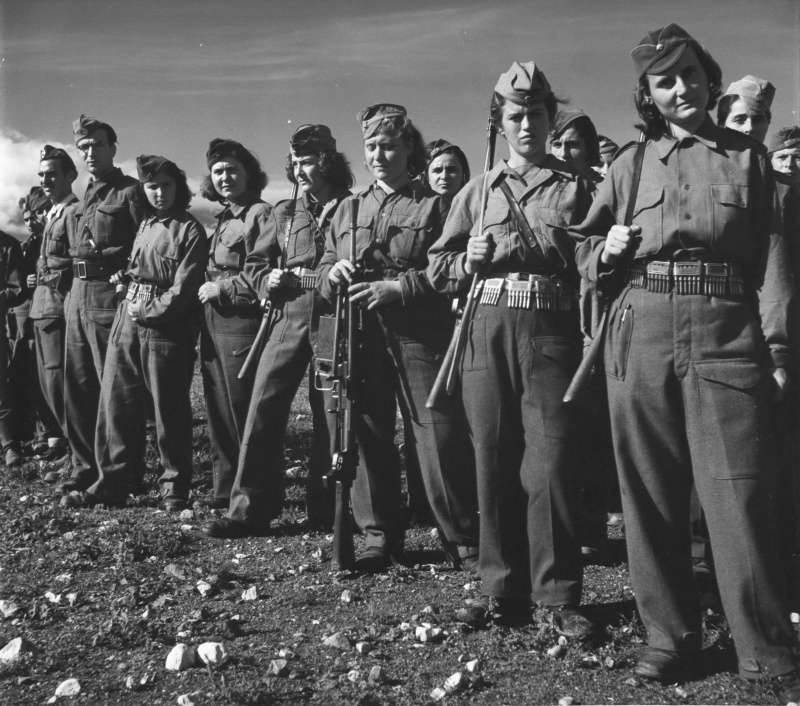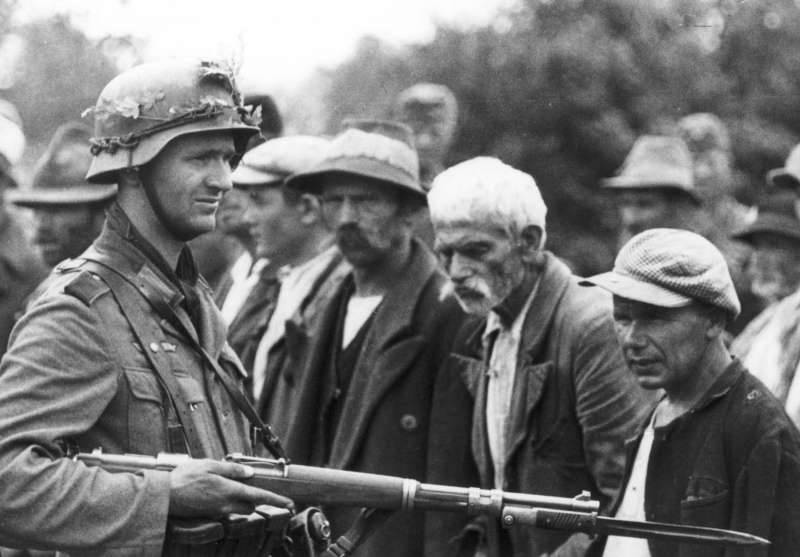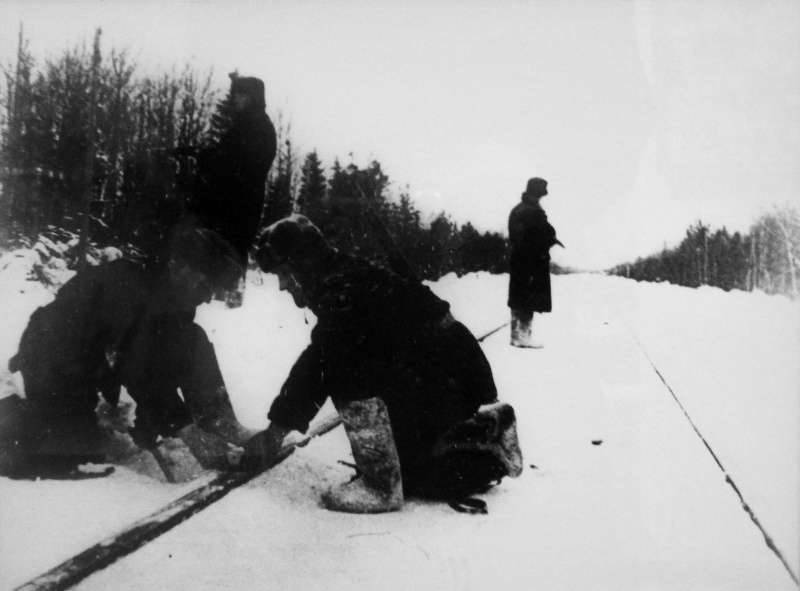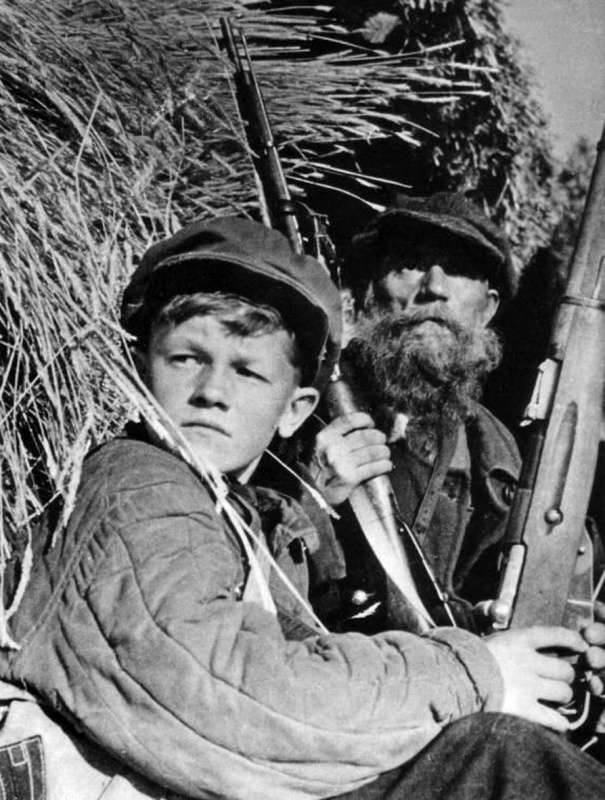European resistance movement: myth and reality
April 10 is the International Day of the Resistance Movement. The resistance movement during the Second World War was called the underground and insurrectionary struggle of the peoples of Europe against Nazi Germany and its allies. The most common forms of struggle against the occupiers were: anti-fascist agitation and propaganda, the publication of underground literature; strikes, sabotage and sabotage in transport and at enterprises producing products for the occupiers; armed attacks to destroy traitors and representatives of the occupation administration; collection of intelligence data for the armies of the anti-Hitler coalition; partisan war. The highest form of the resistance movement was an armed uprising and popular (partisan) war, which covered entire regions and could lead to their liberation from the invaders (as in Belarus, Ukraine and Yugoslavia).
It should be noted that a lot has been said and written about the European resistance movement, which allegedly caused great damage to the Third Reich. And now the highly exaggerated myths about the European Resistance have become part of the revision of the Second World War in the interests of the West.
The scale of European Resistance (excluding the territory of the Soviet Union, Yugoslavia and Greece) was greatly exaggerated for ideological and political purposes even during the existence of the socialist bloc of countries led by the USSR. Then it was good form to turn a blind eye to the fact that many states were members of the Nazi bloc or surrendered to the Nazis with little or no resistance. Resistance in these countries was minimal, especially compared to the support they provided to Nazi Germany. In fact, it was the prototype of the modern European Union led by Hitler. The economic, demographic resources of Europe were combined with the aim of destroying the Soviet (Russian) civilization. Most of Western Europe simply fell under Hitler, as it was in the interests of the masters of the West, who actually created the Third Reich project.
In some states, the appearance of resistance arose only when the Red Army approached (Hungary, Austria and the Czech Republic), and when the so-called. The second front, in others it was minimal. However, during the years of the existence of the Soviet Union, they tried not to stick out this fact so as not to offend the allies and European "partners", including the fraternal socialist countries.
The only exceptions were Yugoslavia, Albania and Greece (not counting the Soviet Union), where the resistance took on a wide scope and popular character. However, this was due to the fact that the Balkan region does not quite fit into the Western (European) civilization, preserving the Orthodox and Slavic traditions, the cultural and civilizational type of the Byzantine Empire. In this respect, the countries of the Balkan Peninsula are closer to Russian civilization, especially Serbia, Montenegro and Greece. Although in modern times, Westernization has practically already won on the Balkan Peninsula.
Female partisan of the Italian resistance movement in the mountains of northern Italy
The Third Reich was the most striking, outspoken manifestation of the Western project. No wonder the German Nazis took the British Empire and its racist practices as an ideal. The "Eternal Reich" in all colors and very frankly showed the future that awaits all of humanity if the Western project of the New World Order wins. This is a slave-owning, caste civilization, where there are “chosen” and “two-legged tools”, slaves, and some people are generally classified as “subhuman” (Russians, Slavs), who were sentenced to total destruction. Huge concentration camps, Sonderkommandos, the total destruction of any opposition, the zombification of people, etc. all this was expected by mankind if the USSR had not crushed the “brown plague”. Then the West had to disguise its cannibalistic insides.
After the collapse of the Roman Empire in Europe, with one or another success, they tried to recreate the "pan-European empire" (European Union) - the empire of Charlemagne, the Holy Roman Empire (since 1512 - the Holy Roman Empire of the German nation), the French Empire of Napoleon and the Second Reich. Since 1933, the project of a "pan-European empire" was headed by the Third Reich. The roots of this German aspiration for imperial superiority go very far into the depths. It was not for nothing that Nazi ideologies turned to medieval Germany, the Holy Roman Empire, the empire of Charlemagne, and even further to the Roman Empire. After all, it was the "Germans", however, under the conceptual and ideological leadership of Rome, which was then the "command post" of the Western project, who created a millennium ago what is now called "Europe", the "West". It was Rome and the “Germans” (there was no single people then) that initiated the process of “Onslaught on the East and North”. Therefore, assigning the name “Barbarossa” to the plan of war against the USSR-Russia, by the nickname of the Holy Roman Emperor from 1155 to 1190 Frederick I Barbarossa (Red-bearded, from Italian barba, “beard”, and rossa, “red”), had a great meaning. After all, it was the “empire of the German nation” that united a significant part of Western Europe and, one way or another, ruled it for several centuries.
The leaders of the Third Reich considered themselves the heirs of this tradition. Austria was invaded bloodlessly in 1938. In accordance with the Munich Agreement, the Sudetenland was annexed. In September 1939, Germany began hostilities, and by July 1940, it had actually united almost all of continental Europe under its rule. Finland, Hungary, Romania and Bulgaria became voluntary helpers of the Eternal Reich. Only the Balkan outskirts - Greece and Yugoslavia - were captured in April 1941.

Greek partisans and partisans in the ranks
At the same time, invading the boundaries of a European country, the Wehrmacht met resistance that could surprise with its indecision and weakness. This was especially surprising because the Wehrmacht was still in its infancy and reached a good level only in the spring of 1941. So, the invasion of Poland began on September 1, 1939, and after a few days serious resistance was broken. Already on September 17, the Polish military-political leadership fled the country, leaving the troops, who still continued to resist. Denmark hoisted the white flag on April 9, 1940 almost immediately. An hour after the start of the operation, the government and the king ordered the armed forces not to resist the German troops and capitulated. Norway, with the support of the allies (mostly British), held out longer until the beginning of June 1940. The Netherlands capitulated during the first five days of the war - May 10-14, 1940. The Belgian campaign continued from May 10 to May 28, 1940. France fell almost instantly , especially if we recall the bloody and stubborn battles of the First World War: German troops began to seize the country on June 5, 1940, and already on June 14 Paris capitulated. On June 22, an armistice was signed. And in the First World War, the German Empire tried in vain for four years to defeat France.
It is not for nothing that the beginning of the German blitzkrieg in Europe received in France a "strange war", in Germany - a "sitting war", and in the United States - an "imaginary" or "phantom war". A real war, not for life, but for death, began in Europe only on June 22, 1941, when the German-led European (Western) civilization and the Russian (Soviet) civilization clashed. The short-term clashes of the armies of a European country with the Wehrmacht looked more like observing a ritual “custom” than a real battle for their land. Like, you can’t just let the enemy into your country, you must maintain the appearance of resistance. De facto, the Western European elites simply surrendered their countries, as Nazi Germany was to lead a new "crusade" to the East.
It is clear that the power of the Nazis, somewhere relatively soft, and somewhere hard, provoked the resistance of various social forces and groups in European countries. Resistance to the Nazi regime also took place in Germany itself, in the most diverse social groups - from the descendants of the Prussian aristocracy, hereditary military to workers and communists. There were several assassination attempts on Adolf Hitler. However, this German Resistance was not the resistance of the whole country and the people as a whole. As in most other German-occupied countries. Danes, Norwegians, Dutch, Czechs, Slovaks, Croats, French and other Europeans initially felt good in the "pan-European empire". Moreover, a significant part of the most passionate (active) part of the population supported Hitler, in particular, young people actively joined the SS troops.
For example, the resistance movement of France was completely insignificant, with a significant population. So, according to Boris Urlanis's thorough study of human losses in wars ("Wars and the Population of Europe"), 20 thousand French people (out of 40 million people in France) died in the Resistance movement in five years. Moreover, during the same period, from 40 to 50 thousand French died, that is, 2-2.5 times more, who fought for the Third Reich! At the same time, the actions of the French Resistance are often described in such a way that it seems that it is comparable to the battle for Stalingrad. This myth was maintained even in the Soviet Union. Like, we were supported by the whole of Europe. Although in reality most of Europe, as under Napoleon, opposed Russian civilization!
Real resistance to the "Eternal Reich" led by Germany was only in Yugoslavia, Albania and Greece. True, in the same Yugoslavia there was a powerful collaborationist movement, like the Croatian Ustashe. The resistance on the Balkan Peninsula is explained by the still preserved deep patriarchy of this outskirts of Western Europe. The cultural and civilizational code of the Balkan peoples has not yet been fully westernized, suppressed by the Western matrix. Serbs, Greeks and Albanians were alien to the orders that the Third Reich established. These countries and peoples, in their consciousness and way of life, by the middle of the 20th century, in many respects did not belong to European civilization.

Operation to identify partisans among local residents in Yugoslavia

Partisans of the 1st Proletarian Brigade of NOAU, armed with Czech light machine guns ZB vz. 26. The village of Zharkovo near Belgrade
Poland is often ranked among the countries with strong resistance. However, if you carefully consider the situation in Poland, you will have to admit that here, as in France, the reality is greatly embellished. According to the data collected by the Soviet demographer Urlanis, during the Yugoslav Resistance, about 300 thousand people died (out of about 16 million people in the country), during the Albanian Resistance - about 29 thousand people (out of a total of 1 million population of Albania). In the course of the Polish Resistance, 33 thousand people died (out of 35 million of the population of Poland). Thus, the proportion of the population who died in the real fight against the Nazis in Poland is 20 times less than in Yugoslavia, and almost 30 times less than in Albania.
Apparently, the weakness of the Resistance in Poland was due to the fact that the Poles had long become part of European civilization. Catholic Rome has long turned Slavic Poland into a "ram" directed against the Russian people. Therefore, for the Poles, although they hated the Germans, dreaming of a "Great Poland" including at the expense of the lands of Germany, joining the "pan-European empire" is not was unacceptable. Poles have already become part of European civilization. Their consciousness was distorted, suppressed by the Western "matrix". No wonder the Poles were the worst enemies of the Russians for almost a millennium, an instrument in the hands of the Vatican, and then France and Britain (now the USA).
The number of those who died in the real struggle does not include people who were destroyed by the Nazis as "racially inferior". In the same Poland, the Germans exterminated 2.8 million Jews out of 3.3 million who lived before the start of the occupation. These people were simply exterminated. Their resistance was minimal. It was a massacre, not a war. Moreover, in the extermination of “subhumans” (Russians, Serbs, Gypsies and Jews), not only Germans drugged by Nazi propaganda, but also representatives of other peoples - Croats, Hungarians, Romanians, Balts, Ukrainian Nazis, etc. took an active part.
Thus, it is worth remembering that the strong exaggeration of the European Resistance, originally had a political and ideological significance. And after the collapse of the Soviet Union, when all sorts of denigration of the USSR-Russia became the norm and profitable business, the merits of the European Resistance became even more mythologized in order to belittle the role of the Red Empire and the USSR in the Great War.
In fact, almost all of continental Europe by 1941, one way or another, without much shock entered the empire of Hitler. Italy, Spain, Denmark, Norway, Hungary, Romania, Hungary, Slovakia (separated from the Czech Republic), Finland and Croatia (separated from Yugoslavia) - together with Germany entered the war with the USSR, sending their troops to the Eastern Front. True, Denmark and Spain, unlike other countries, did this without a formal declaration of war.
The rest of Europe, although they did not take a direct, open part in the war with the Soviet Union, but one way or another "worked" for the Third Reich. So Sweden and Switzerland economically supported Germany, their industry worked for the Reich, they were a place for "laundering" gold, silver, jewelry and other goods stolen in Europe and the USSR. Under the Nazis, Europe became an economic entity - the "European Union". France gave the Third Reich such oil reserves that they were enough to start a campaign in the USSR-Russia. From France, Germany got large stocks. The collection of occupation expenses from France provided an army of 18 million people. This allowed Germany not to carry out economic mobilization before the attack on the USSR, and to continue building a network of highways. Implementation of Hitler's grandiose plans began to create a new Berlin - the capital of a united Europe, the "Eternal Reich".
When the famous commander (later to become president) of the United States, Dwight Eisenhower, entered the war at the head of the Anglo-American troops in North Africa in November 1942, he had to first fight not with the German, but with 200 thousand. French army under the French Minister of Defense Jean Darlan. True, the French command, in view of the clear superiority of the Allied forces, soon ordered the troops to cease resistance. However, in these battles, about 1,200 Americans and British, more than 1,600 French, have already died. Of course, honor and praise to the fighters of de Gaulle, the pilots of the squadron "Normandy - Neman." But in general, France fell under the Germans and did not suffer much from this.
Interesting information about the "pan-European army", which fought with the USSR. The national identity of all those who died on the Eastern Front is difficult or almost impossible to determine. However, the national composition of the servicemen who were captured by the Red Army during the war is known. Of the total number of 3.7 million prisoners, the bulk were Germans (including Austrians) - 2.5 million people, 766 thousand people belonged to the countries participating in the war (Hungarians, Romanians, Finns, etc.), but still 464 thousand people are French, Belgians, Czechs and representatives of other countries that have not officially fought with us.
The power of the Wehrmacht, which invaded the Soviet Union, was provided by millions of highly skilled workers throughout continental Europe. More than 10 million skilled workers from various European countries worked on the territory of the German Empire itself. For comparison: in the USSR-Russia in 1941 there were 49 million men 1890-1926. births (out of 196.7 million people in the population as a whole). Relying on the whole of Europe (more than 300 million people), Berlin was able to mobilize almost a quarter of all Germans for the war. In the Soviet Union during the Great Patriotic War, 17% of the population was called up (and not all of them were at the front), that is, every sixth, otherwise there would not be qualified men left in the rear necessary to work at industrial enterprises).
More or less noticeable resistance appeared in Western Europe only when it became obvious that the European hordes led by Germany would not break the USSR, and the main forces of the Third Reich were defeated on the Russian front. Then London and Washington swept away the concept: it was impossible to wait any longer, it was necessary to actively intervene in the war in Europe so as not to lose it. The resistance forces began to activate. For example, the Warsaw Uprising, organized by the Home Army, began in the summer of 1944, when the Red Army was already near Warsaw. The Poles, backed by the Anglo-Saxons, wanted to show their strength in order to take decisive positions in the country. And the uprisings of the French underground began, basically, after the landing of the troops of the Allied countries in Normandy on June 6, 1944. And in Paris itself, the uprising began on August 19, only 6 days before the Free French forces under the command of General Leclerc entered the city.
Thus, it is worth remembering that the European Resistance is largely a myth. The Nazis met real resistance only on the lands of civilizations and cultures alien to them - the USSR, Yugoslavia and Greece. The resistance movement in most European countries became an influential factor only towards the end of the war, shortly before the liberation of the rebel areas by the Allied armies.

Soviet demolition partisans mine the railway in Belarus

Young and elderly partisans near a haystack in the Leningrad region
ctrl Enter
Noticed osh s bku Highlight text and click Ctrl+Enter



